Everybody should take home security seriously, but it is extremely important for those of us who are stockpiling for when society breaks down to go a step or two beyond what the average person would consider. The primary goals of whatever upgrades you make to your security are to deter, detect, delay, and respond to a threat. I hope in this article I can cover basic, intermediate, and even some more advanced steps you can deploy at your home and your bugout location (if they aren’t the same place yet).
So many people are way too lax when it comes to potential threats to their security. It CAN happen to you, no matter where you live. Don’t be complacent when it comes to security. Property crime has been on the decline in recent years, but it is nothing a poor economic season can’t change. OPSEC is vital to protecting your preparations, and you would be surprised how much can be inferred about you by a casual visitor to your home. It’s important to remain the grey man, but at the same time provide your home and what is inside of it with the maximum amount of protection you can afford.
On average a home is broken into every 15 seconds in America. Most home invaders and burglars will monitor a place for patterns for a while prior to trying to gain entry. Often times they will be armed with at least a handgun. The mindset can vary from drug addicts desperate for a fix, to seasoned professionals with sophisticated equipment. Two thirds of burglaries involve some form of forced entry. They don’t always come alone. Often times the burglar won’t live too far away from the area the are robbing. And contrary to assumptions by many, most take place between 10 AM and 3 PM, while homeowners are off working. Despite it being one of the most effective deterrents for burglaries, less than one in five homes have a working home security system.
You may want to consult with a veteran officer of your local law enforcement department and ask them questions to get a better understanding of the level of threats you may face in your area. You want to know the most common motivation for home invasions in your area, and if burglary is the reason, what are the most common types of items stolen. You want to ask probing questions about the demographics of home invaders and their victims. Be sure to also ask questions about frequency of not only home invasions but also other types of crimes and get an idea of other threats that your home and family may face. Do they know how often the victim and perpetrator know each other? In addition to speaking to local law enforcement, you can gather a lot of data on crimes from government websites, as well as other crime mapping services.
Simple Steps to Better Secure Your Home Right Now
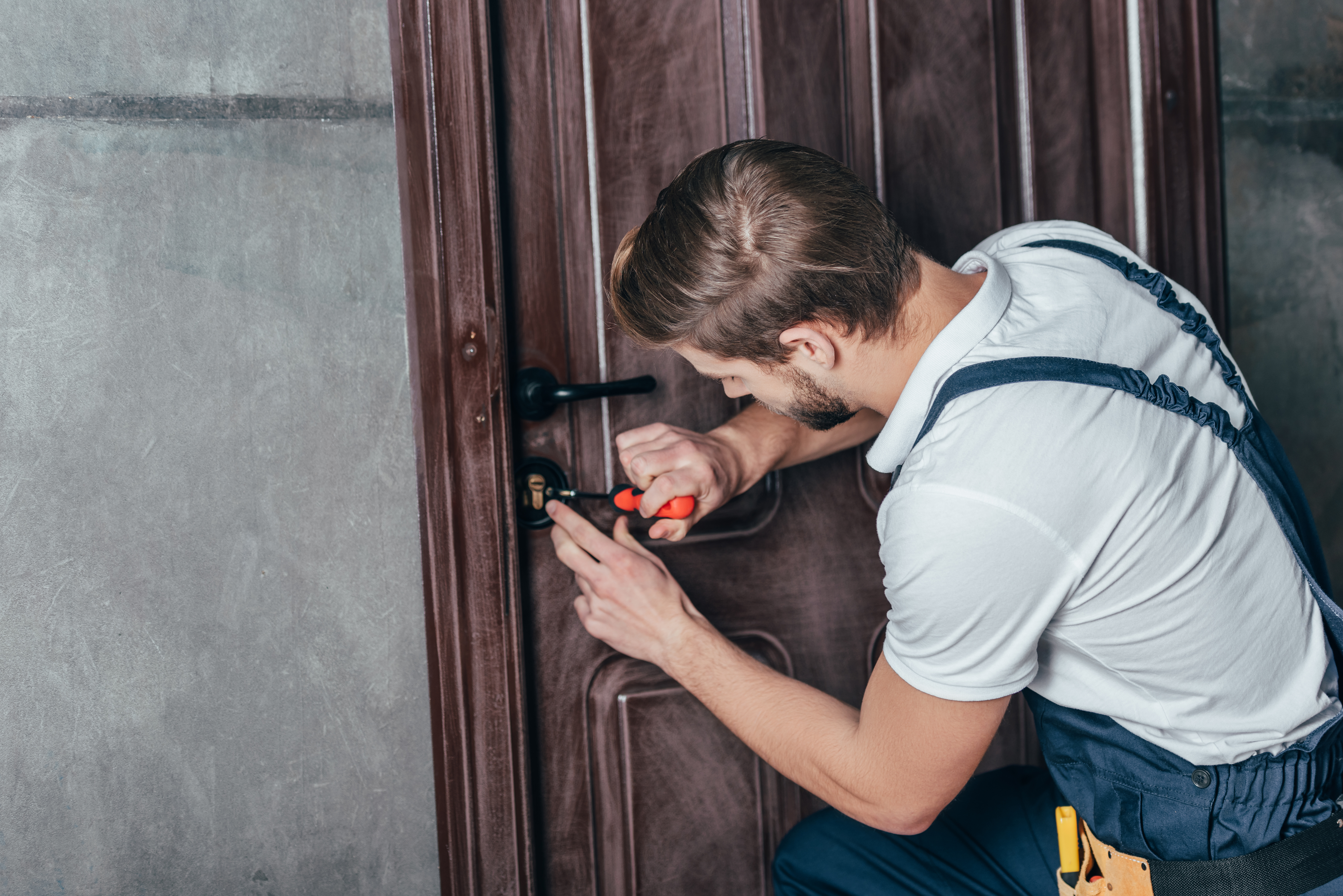
The first thing you want to do is stop reading this right now. Get up and go check your window and door locks, and if any of them are not functioning properly, repair or replace them, because in nearly a third of cases a burglar will enter through an unlocked door or window. Now that this is out of the way, you want to make a habit to check all door and window locks before you leave the house and before you go to bed. Now, check the locks on the doors. Did you replace them when you moved in? Do the deadbolts have at least a 1 inch throw? Also, notice that they probably are only secured by about an inch of wood in most cases, as it is likely that the screws securing the plate are not more than an inch long. This means they don’t anchor into more than the thin door frame and not the stud as well. If this is YOUR exterior doors, there is a $10-20 fix per door, you can make to them to improve the security of these access points. Over a third of burglars enter through the front door.
Replace your hinge screws with 3.5 inch #10 screws. Get a heavy duty mending plate made of 12 gauge galvanized steel from your local home repair retailer. place it on the door casing centered on the deadbolt and trace the deadbolt on the plate and the plate on the frame. Use a drill to make the hole for the deadbolt in the mending plate and file the rough edges. Use a chisel to remove enough wood for the steel plate to sit inside of the frame flush with the surface. Use 4″ screws to secure the plate to the door frame. Purpose built options exist for this solution as well, but they are costly. This addition combined with the standard metal surface plate that comes with the lock will make kicking in the door much more difficult. Attaching another metal plate perpendicular to the first on the inside under the trim may be another option to consider to provide more resistance on the lock side.

The next step is to check the security of the door itself. Do you have bump and pick resistant locks, and have you considered a multiple bolt system? It is important to use mechanical locks in case of a power outage or EMP or other failure. Make sure exterior doors do not have windows in them or next to them. A couple of peep holes at adult and child height are sufficient. Next what is the door made out of? Never have a hollow core on an exterior door, hardwood and steel doors are best. Avoid pet doors at all costs. If you have a sliding glass door consider replacing it with double doors if you are on a tight budget, or add a more secure upgrade like the Titan meshtec screen. Once you have exterior doors secure you will want to focus on the next most common method of entry, windows.
A method that can be deployed on existing windows is a security film, which can be professionally installed or purchased as a do it yourself option as well. This film will resist multiple hard strikes to the windows without allowing entry. This can be beneficial for both intruders and areas prone to high wind storms that may carry debris. If you are replacing your windows, consider windows with steel framing tight enough to prevent entry, as adding bars to windows can be aesthetically displeasing. Another consideration if you can afford it is ballistic resistant windows. Be especially careful about securing crawlspace and basement access. Always keep window coverings closed to prevent eavesdroppers from casing your interior for valuables. A frequently missed problem window is the bathroom, as it is often opened to vent steam from a shower.
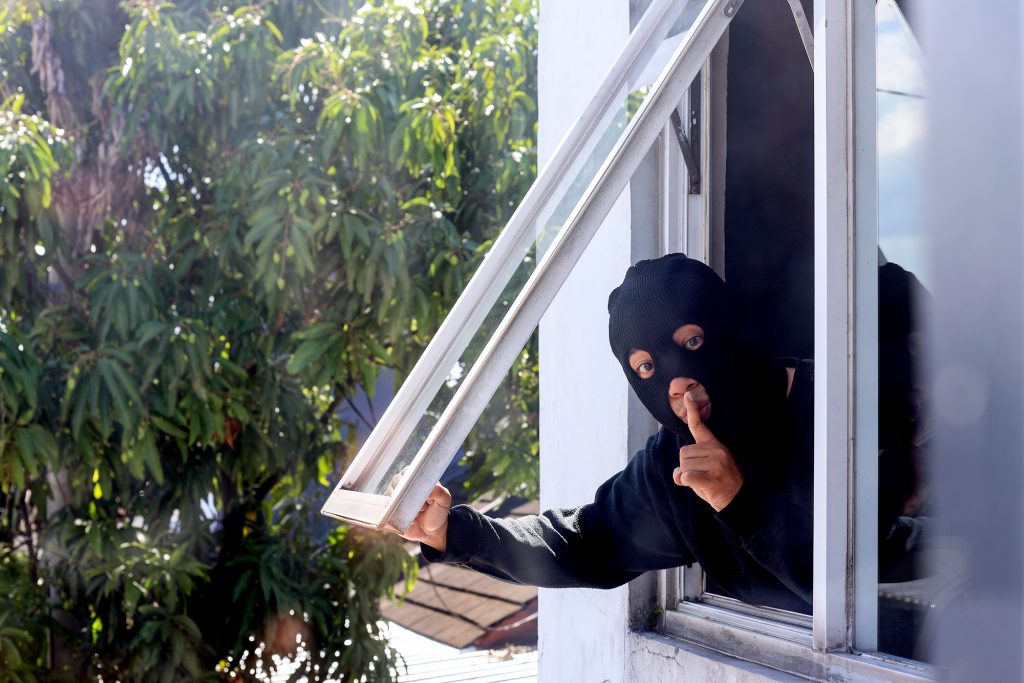
You may have two pane windows that can raise and lower, like many older homes do. From the inside, drill a hole in the pane farthest away from you, just above the pane closest to you, and insert a steel pin. Next drill a hole three inches up the sides of the pane farther away from you, and insert an additional pin in each one. Now if you need to use the window for ventilation, you need only remove the center pin, and the window cannot provide enough of an opening to allow passage into the house. This method is not recommended for vynil or metal framed windows. Take steps to bolt in any window mounted air conditioning units. See below on ways to add electronic intrusion detection to your windows and doors.
If you have a garage keep the door closed unless you have full view of it to prevent somebody from sneaking in and hiding and then ambushing you or stealing valuables from it later. If you have an attached garage, be sure to secure the door from the garage into your house the same way you would any other exterior door, and keep the deadbolt locked at all times, even if it is inconvenient.As you would on the front door, install a wide angle peephole so you can see into your garage from the house without opening the door. If you are unfortunate enough to have windows on your garage door consider frosting them or covering them with mylar on the inside, to prevent people from taking a peak at what you store in there. If you can afford a working second vehicle to keep parked in the driveway or on the curb, you can give the impression that somebody is always home.
If your garage door opens automatically, ensure you have modern transmitters that use rolling code technology, so that tech savvy thieves can’t just intercept the signal and open your garage later. Another modern advance is garage door key fobs, if you still have a clunky button clipped to your visor, it’s time to upgrade before somebody breaks into your car and steals it. Although they are convenient avoid mounted keypad entry as well as they can be bypassed in many ways. Another garage door consideration is to place a zip-tie on the emergency release lever on your garage door. A criminal can use a wedge and a coat hanger to easily activate the emergency release, but an adequate zip-tie will provide too much resistance for a coat hanger, but still retain the emergency release functionality albeit with a bit more force to break the zip-tie. If you go away from home use a C-clamp to pin a sliding garage door to the rail on each side to prevent it from being pried up.

Another big consideration is landscaping. bushes and shrubs can provide concealment for would-be burglars. trim bushes to below three feet to reduce deadspots for your cameras. If you have a long driveway consider gravel that will create noise even if a quiet vehicle drives on it. Consider planting something nasty and formidable under your ground level windows, and next to your utility boxes, such a barberry plants, which have long slender thorns hidden under their leaves. Make sure any trees near the building cannot be climbed to gain access to upper levels or the roof. As mentioned in the OPSEC article, keeping up with your neighbors on landscaping will help you to not stand out, and keep your place appearing lived in and active. Don’t leave tools, ladders, and the like outside where a potential thief may use them to break in.
Using Technology and the Internet to Improve Home Security
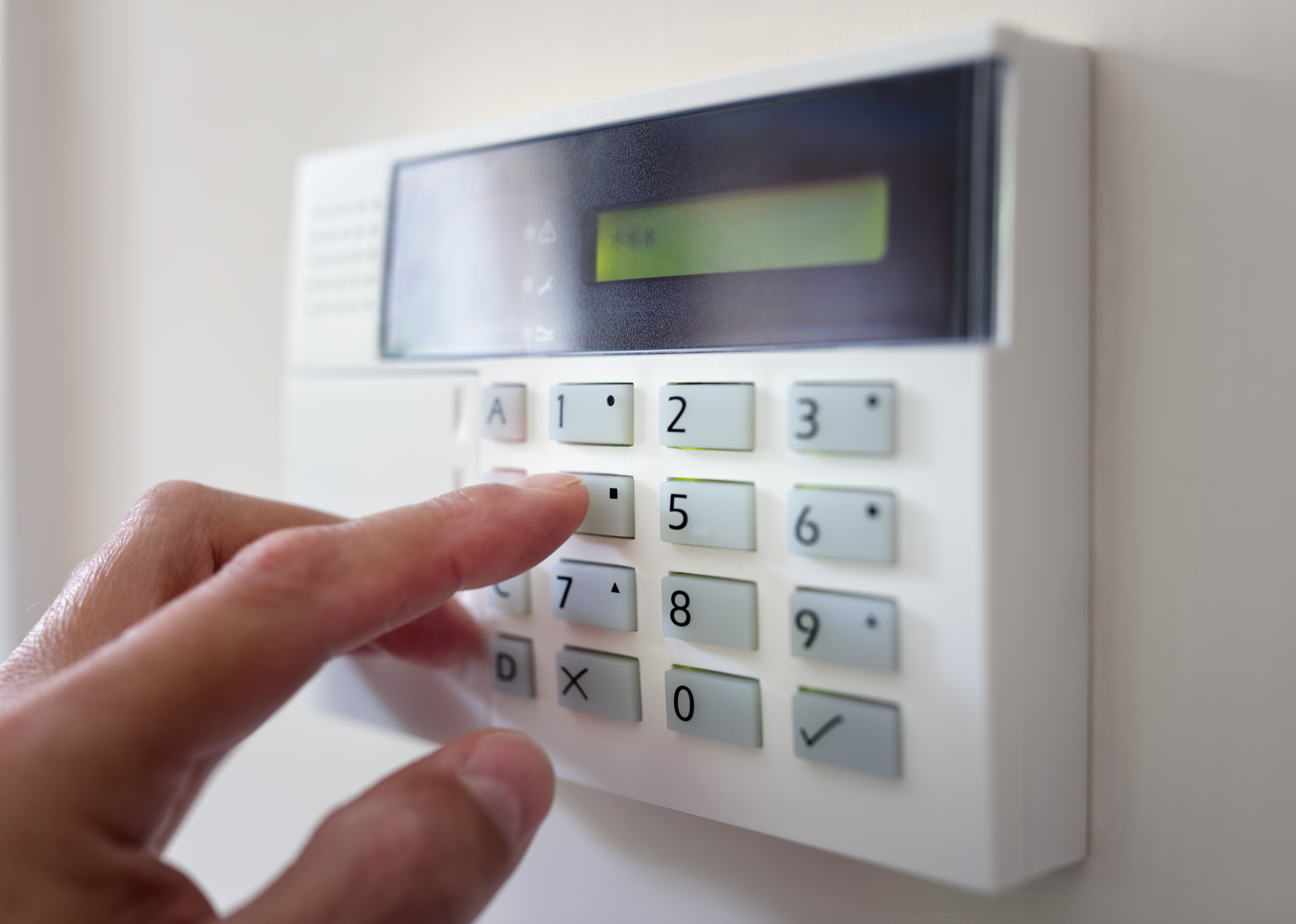
Introducing technology into the strategy may be above the learning curve of some and you may have to hire out for help or spend some hours learning on the internet, but let’s discuss some of the basics of a DIY electronic home security system. First of all we want a system that can alert us the moment an intrusion takes place, can document that intrusion, and can hopefully deter most unwanted visitors from continuing their crime. It should also be able to back up record of the incident to an internet storage location and function even if utilities are cut to the home. It should detect when doors and windows are open, include cameras in key locations, and provide motion detection lights to draw attention to access points at night if entry is attempted at a minimum.
Let’s start with power, you will want, at a minimum, to purchase a power strip with a battery backup, so your system stays running in the event power is cut from outside the home. Next you will want to consider placement for motion sensor lights and cameras. I recommend motion sensors with lights high up near the roof covering entrances. Inside motion sensors should be placed in each room and in hallways facing the most likely directions of entry. Cameras outside should be inconspicuous, and difficult to notice without looking thoroughly. A wide angle pinhole camera in addition to a peephole on the door can be helpful. We also recommend cameras inside the home pointed at entrances and in hallways. Many people install electronic locks and even things like RFID access cards, or biometric readers to exterior doors. We find their ability to fail during power loss or to be compromised easily with a little tech knowledge to be significant enough to steer us away from using them.
Sadly unless you are very technically inclined you may not be able to build an all inclusive system, but if you have the know how, or the dedication to learn, you can go quite far on your own. When selecting a camera, many people opt for a DVR kit that includes cameras and a digital video recorder. Typically these have a hard drive capable of weeks of storage as well as features for backing up to the internet or receiving live alerts. They can also be configured to allow remote monitoring and control. Another option would be to use a miniature computer board like a Raspberry Pi and a Pi Camera or a USB webcam. This allows you versatility of software and even the option to code functionality yourself if you know a programming language like Python. PIR motion detectors for the Raspberry Pi are very inexpensive as well. All of the Raspberry Pi devices could be programmed to send their information back to a central computer.
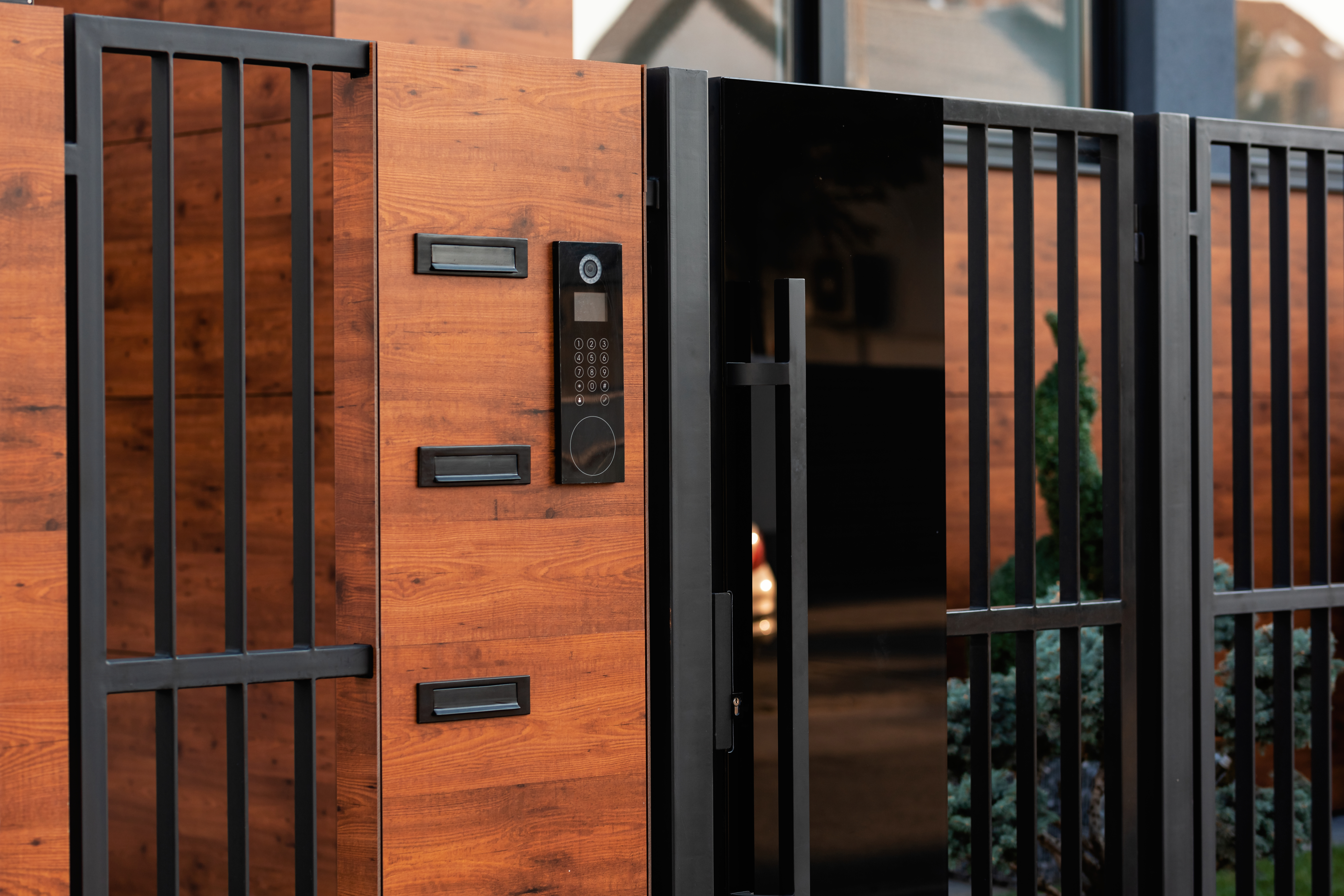
If you have a fence consider an audio video intercom at the gate to discourage unwanted guests from even approaching your door. Instead, or in addition to it, the ability to see, hear, and communicate with visitors at your door is a must. You don’t want to have to open the door to talk to somebody you may not know, and then have to wrestle to keep them out. Being able to communicate with somebody at your door from anywhere in the world, over the internet, is a bonus as it allows you to give the appearance that your home is occupied even if it is not. With the right setup of motion detectors and cameras, you should be able to record and monitor movement in any room in your house and capture video and stills of anyone outside your home, or anyone gaining entry through an exterior door. If you have a large property or a remote location consider using game cameras to keep an eye on the place while you aren’t around.
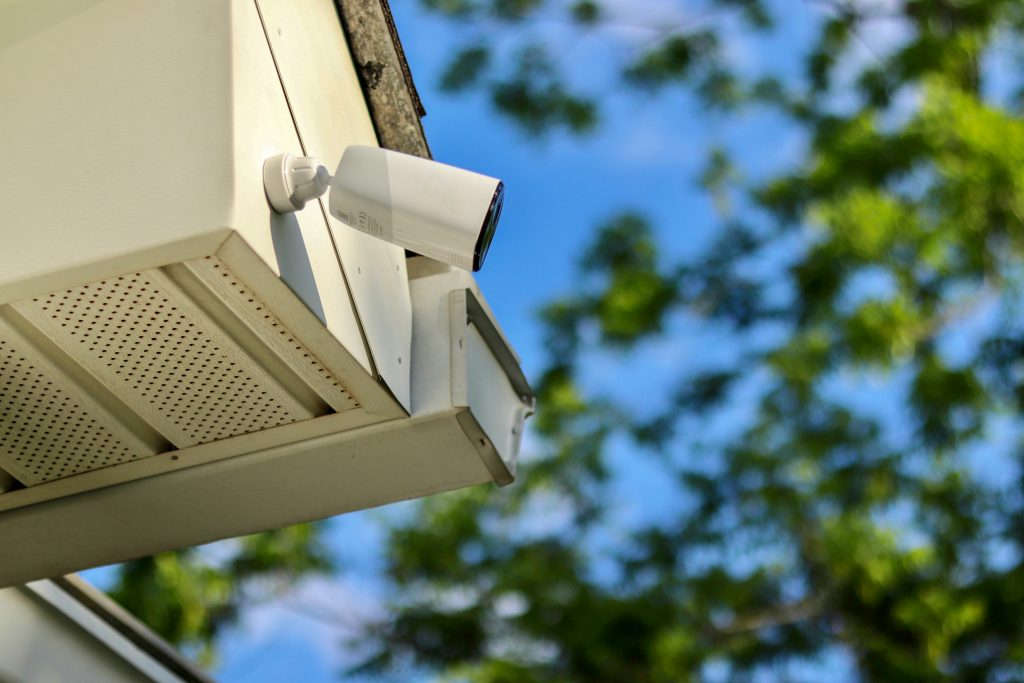
Pay attention to the shape of your home, if you live in the city are some entrances or windows more obscured from view than others? Make sure these areas get extra coverage with motion lighting and cameras. Make sure you control vehicle access and are able to capture license plate and make and model of any vehicle that parks in your driveway or in front of your house. Infrared driveway alarms can alert you to a vehicle passing by the sensor entering your property. If you have a large yard consider motion detection at the perimeter connected to infrared LEDs so that at night if they are tripped the intruder won’t know unless they are wearing night vision, but you will be able to see the glow and have a general idea of the point of entry.
There are DIY burglar alarms available as well that include loud siren alarms with panic buttons. A solar power friendly alternative is to buy a basic 12V car alarm and locate it centrally within your home for panic button functionality if you are on a tight budget. You can connect your contact sensors on your windows and doors to an automotive alarm system to save on costs or deploy a more customizable solution. Using things like breadboards Arduinos and Raspberry Pis will give you more control and even more customization, but it is possible to wire contact sensors into a car alarm directly to save time and effort, although you may lose the ability to know which window or door was specifically opened.contact sensors aren’t just for doors and windows. A sensor might want to be placed on your medicine cabinet if you store any prescriptions that may have a street value, in this way when a guest comes over and decides to be nosy you can be alerted to their snooping. Another sensor can be placed on your mailbox, to alert you when it has been opened. Perhaps you have a liquor cabinet.
You may want to be able to remotely turn lights on and off throughout the house, or be notified when somebody in the house flips the switch, or forgets to turn it off when they are done. Bluetooth, WIFI, or RFID can be used to detect presence in certain rooms. Turn on the light and wake up your computer when you enter the room, or minimize a mature movie if one of your younger children comes in. No need to be implanted with a chip, with advances in ultra wide-band technology it is possible to track locations of people in a room within a few inches of accuracy and in near real time.
We recommend learning the DIY methods and keeping the system open source. A professionally installed prefabricated system has it’s advantages, unique is not one of them, and if your security system is the same as tens of thousands of other people’s, chances are it will be easier to defeat than one for which no manual exists and you programmed yourself. If it is too technical, reach out to the computer department at your nearby college to find out about “maker and hacker spaces” where you will be able to network with somebody who has the necessary skills to help you build your system for a fair price.
Keep in mind it may be a good idea to compartmentalize the project so no one person has your entire security plan. DIY tutorial articles and videos are everywhere online to assist in teaching you about the versatility of micro computers like the Pi. Keep the home security network separate from the network you use to traditionally browse the internet. You can do this by using a separate router and ensuring access from the main network is locked down for all but the trusted processes with a firewall. An alternative to connecting through a traditional internet connection would be to use a GSM with 3G or 4G module connected to an Arduino or Raspberry Pi provided you are within range of a GSM cell tower.
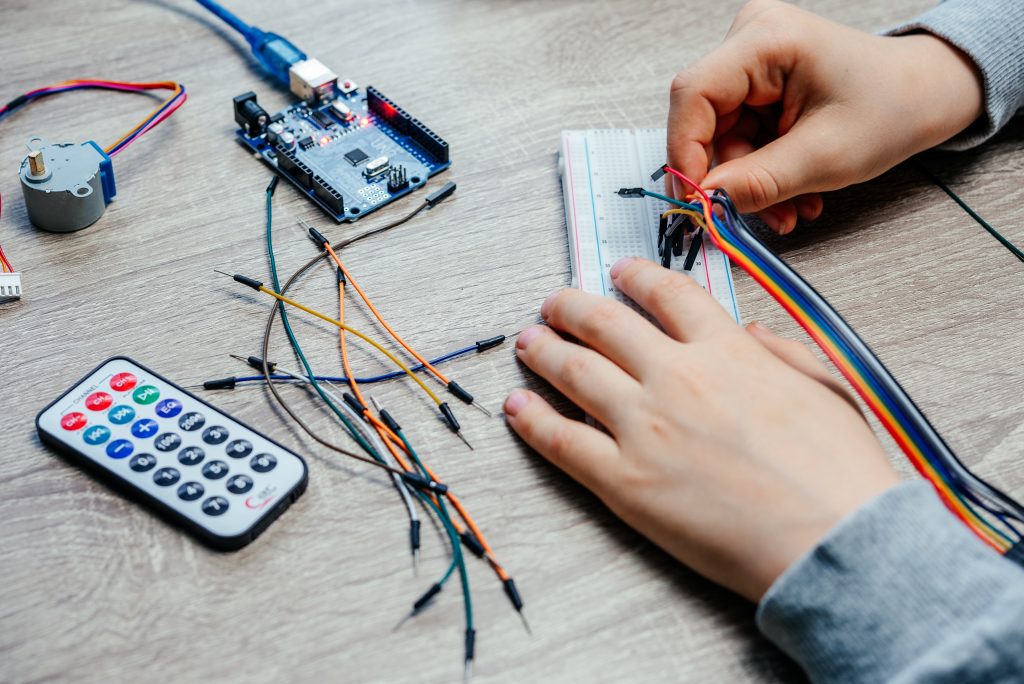
microcomputers are a really good choice. With the ideal setup you could have a mobile device with you connected to your main computer through the internet from anywhere in the world, that allows you to see when and where entry and motion are occurring in real time, and be able to remotely monitor and respond to any of your cameras or sensors, as well as communicate with the intercom system at your home’s entrance or even inside of your home. You should consider hardwiring carbon monoxide and fire monitoring into your system as well. Once you really discover the potential of these microcomputers you can get quite creative with automating your home or bugout location.
Make or purchase a cardboard cutout and mount it on a track set to move into the window if perimeter intrusion is detected, this decoy will give the impression that somebody is home and aware of a visitor, and allow you to be elsewhere in the home preparing for them. If you have a sprinkler system with multiple zones, perhaps set it to turn on if somebody unwelcome enters your yard in that zone. A commercial sprinkler product is available to meet this specific need complete with PIR detector. Writing a simple program that will occasionally turn off one light and then turn a light on in another room adjacent to it shortly after to simulate movement through the house when you are away, is a slightly smarter version of plugging a basic timer into a lamp outlet. Setup speakers in each room that can play talk radio to give the impression of occupants from the outside.
Imagine the ability to monitor water flow to your house and detect a burst water pipe and shut off your main, from another state using a smart phone. Imagine RFID bracelets on the feet of your chickens that automatically open a door to their coop and then closes it to prevent predators from accessing it or use it to distribute metered amounts of animal feed from a larger hopper. You can wire your thermostat into the system and control the temperature of your home remotely. You can control sprinklers or greenhouse irrigation systems. If you are on solar, you can remotely monitor the charge rate and battery levels and turn off non-essential systems. The possibilities go on and on, and adding a PCB like Arduino to the mix only expands the possibilities. With advances in artificial intelligence, expect this to only get more versatile as the internet of things continues to expand.
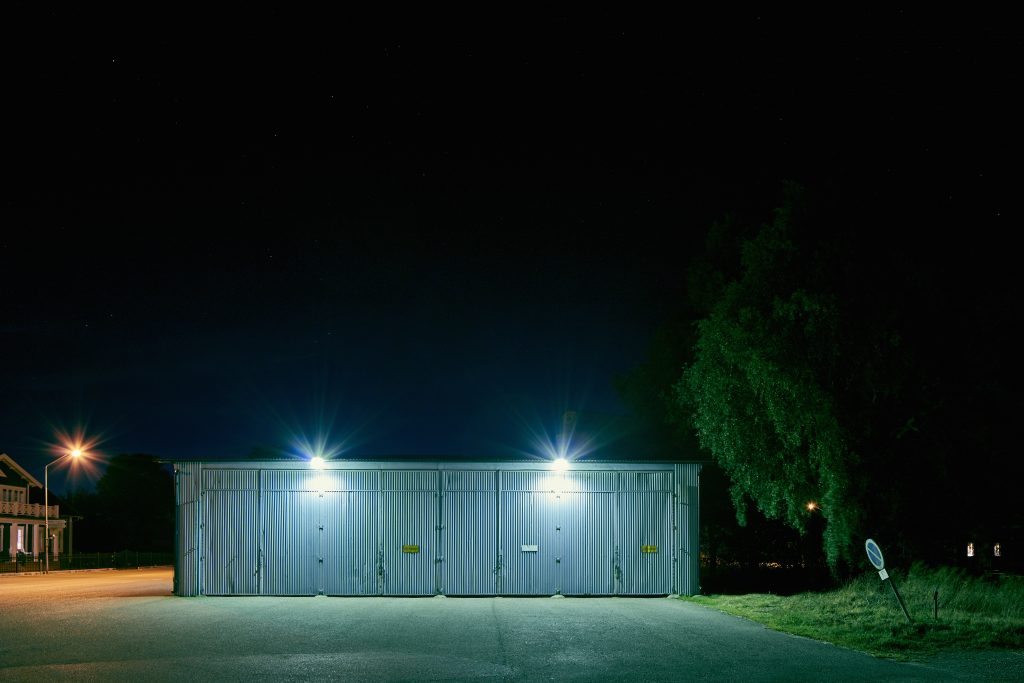
While you will want to mount hardwired motion sensing flood lights high above a person’s normal reach, IR LEDs attached to motion detectors for perimeter detection need not be hardwired or networked and can be set up to have their own solar charge and battery backup. Another inexpensive addition for large yards is to strategically place solar powered floodlights in dead spaces in your yard that automatically turn on at night. The better lit the exterior is, the less likely an intruder is to make an attempt. Just taking a look at your property on a satellite map can often be enough to highlight for you where you need to place lights sensors and cameras.
If you have a desire to go a step further consider a forward looking infrared camera mounted atop a telescoping mast on your roof that utilizes PTZ (pan, tilt, zoom) remote functionality so you can detect temperature variations from people or animals even beyond your perimeter. An augmentation to that might be something like SpotterRF, a type of Compact Surveilance Radar. Another consideration for the geek prepper, would be incorporating a drone for aerial surveillance. Imagine the ability to deploy a drone with a nice camera to not just see who may be at your door or gate, but if they have friends around the corner. With a little programming knowledge and tech knowhow you could even set a drone to patrol a path autonomously.
To respond more effectively to a sniper firing on your house from a distant position of concealment, consider an acoustic gunshot detection system which utilizes an array of microphones and a processing unit that identifies gunshot direction of origin. Snipers often change position between shots, but they can usually only move so quickly without being detected. Knowing where the bullets are coming from allows you to keep effective cover between you and their position while you attempt to locate them.
Other Steps You Can Take
Whether or not you can afford to employ electronic surveillance in your home, consider security signs and window stickers. Choosing signs from a well known and national security services provider is a better choice than a generic set. Often times just the presence of a sign is enough to cause a person to think twice about your house as a soft target. There are several other things you can place outside to help deter criminals. Next to a home security system, one of the most effective deterrents is a dog, but a small dog isn’t going to scare away most burglars. Even if you cannot afford the time or costs involved in having a dog right now you can place a massive dog water bowl on the front porch and a well worn tennis ball in the yard within view of the front door. A beware of dog sign may or may not be too much.

Obviously actually having a large protection breed of dog at home able to let out a deep bark upon a person’s approach to your house is better than pretending you have a dog. Any dog is better than no dog, as long as it barks at noises outside of the house. One way to help your dog alert you to activity outside of your home is to place gravel around the perimeter of your home. Making it 5 or 6 feet wide will ensure anyone walking next to your house will make a lot of noise. Additionally lining both sides of a perimeter fence with gravel can reduce the chance of somebody climbing over undetected. Never leave your dog unattended in the yard, unless their job is protecting livestock. A good watch dog should be under socialized with people outside of the immediate family, and choosing the right breed can go a long way to this end.

Don’t tell anyone you are going on vacation ahead of time, unless they absolutely need to know, such-as house sitters or neighbors to watch your home. Maintain good OPSEC and wait until you return home from vacation to post photos and updates about your trip. Consider a private mailbox at a business specializing in shipping, rather than the post office, so you can receive both mail and packages at a separate location than your home or bug-out location. You need to be careful when disposing of packaging from expensive purchases. If you just got a new expensive TV for example, cut the box up small and bag it to reduce the chance of somebody who doesn’t want to pay for it, rummaging through your trash bin and easily seeing evidence of something easy to resell. Shred sensitive documents with information that might be used for identity theft or that might advertise valuables.
When somebody you don’t know comes to your door, don’t answer the door, this goes double for children and guests in your home. If you are home alone, pick up the phone and call a friend, or even just pretend to. Then shout out to the visitor “just a minute, I’m on the phone”, this should signal to a possible bad guy that you have witnesses that they can’t silence. Each time you speak be at a different position in the room so they cannot pinpoint your location from your voice. Ask probing questions. A common tactic for somebody casing a house is to knock on the door, and ask if so-and-so still lives there. Typically the automatic response is to just tell them they don’t live there, or worse, no it’s “just me”. Ask them for their name, and if they have the right street or house number? The more questions you ask the more likely a person’s story will unravel if they are there for a nefarious purpose. If you thought they were suspicious, keep an eye on where they go after they leave.
What if They Still Manage to Gain Entry?
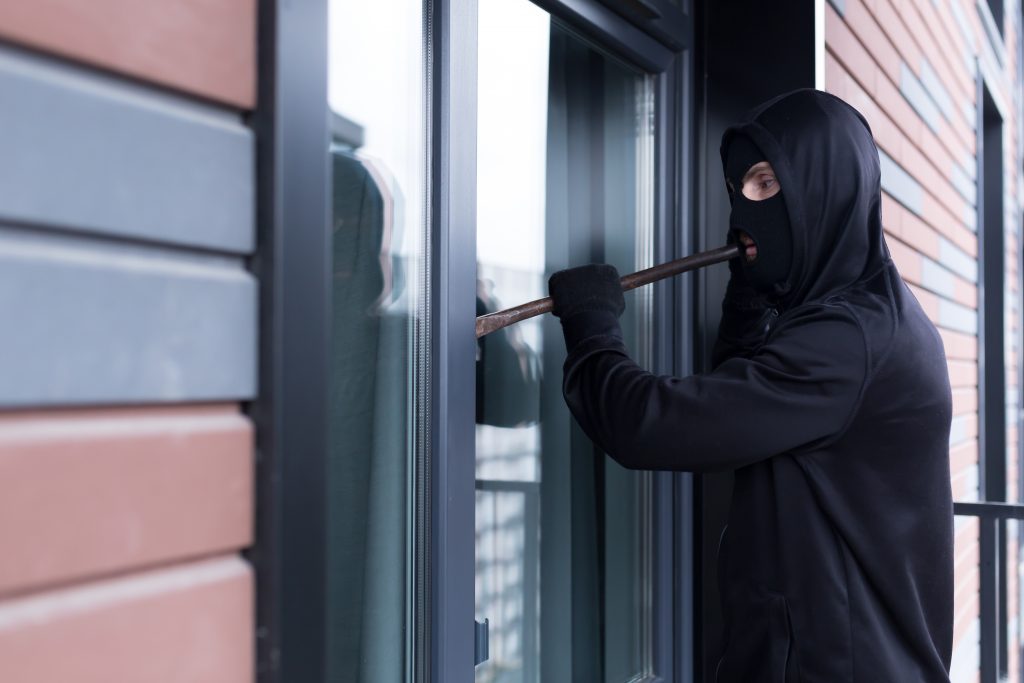
The harder you make it on a thief to gain entry, the more you push them toward others who are softer targets. Let’s assume that despite your best efforts, somebody has made it inside uninvited. Maybe they pick the lock if you didn’t get a pick resistant or bump proof lock for your exterior doors, or you were sloppy and left out a spare key. Perhaps you left the door unlocked when you went out to mow the lawn, and now you are on the other side of the house and can’t hear anything over the lawnmower engine. What if your child made a mistake and opened the door to a visitor, despite how many times you told them not to? Consider if somebody hid in or behind your vehicle when you pull it into the garage. If stuff has hit the fan and they are really desperate they may just take a chainsaw to your door.
Nothing is impenetrable with enough time and resources. How should you respond if you discover an uninvited guest has made their way to the interior of your home? Keep in mind, somebody is home about 30% of the time during an attempted home invasion or residential burglary. Add to the problem, that more than four out of five burglars get away without getting caught. A technology solution that can be deployed to immediately disorient and delay an intruder is a fog machine and strobe lights. Commercial security foggers are available that can fill a room with fog so dense the intruder will not be able to see their hand in front of their face within seconds. This can be set up to go off upon intrusion, or when a panic code is sent from a remote control or smart phone. Additionally, your front door can be protected with a hidden and remote controlled pepper spray fogger.
Obviously if you live in a place with castle doctrine and no duty to retreat, stopping the threat if possible is ideal. There is no reason to not have a loaded firearm on you, or within reach at all times when you are at home. A handgun should be used to fight your way to a long gun, and clearing your home should be done with a long gun if possible. Even if you don’t have a proper panic room, usher everyone occupying the house into a predesignated room deep in the house and outside of likely lines of fire. Make sure everyone knows to stay put and that anyone capable of being armed has a weapon. Ideally you have a two level home and your “safe room” is on the upper floor so you can use the stairs as a choke point absent of cover for the intruder, should they get that deep into your home.
Always take advantage of these choke points such as hallways or the top of the stairs, and perhaps arrange furniture to create others. Placing a shelf full of hardcover books at the back of your choke point can provide a decent and inconspicuous bullet resistant cover position from which to return fire from. If you can afford to do it, strategically harden some corners in your house from gunfire in case you need to use them for cover in a firefight. Mount ballistic steel plates in the lower few feet, and wide enough to hide behind, beneath the drywall of corners that you would foresee using as cover when defending your home. Even sheeting walls with plywood under the drywall, and filling the three inches of dead space inside the walls with sand will stop many pistol rounds. Consider using ballistic material in the back of some of your pieces of furniture, or even a bullet proof couch cushion that you could give to your child as a last resort.
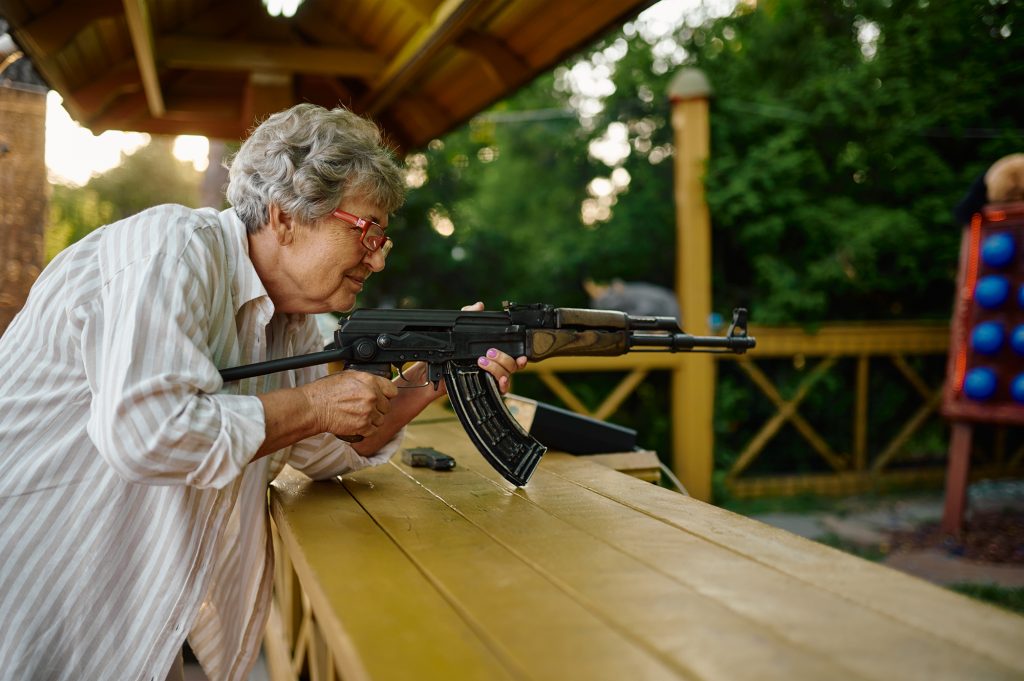
Begin to clear the house room by room, and contact emergency services if available. Tell them your address first, then tell the dispatcher there is a “home invasion in progress”, and finally that you are the owner and that you are armed. If you still have time to relay more information, provide them with a description of yourself, to reduce your chances of being shot by responding officers. If officers arrive before you stop the intruder, return to the “safe room” and call out to officers once you hear them announce their presence. If you are on the line with dispatch they may be able to relay information to the officers about the situation. Hopefully either way your security cameras were able to get a good enough image to positively identify them in the future. If law enforcement is not available, clear your house, then secure the point of entry. Even if you are not home, hopefully we can give you some tips to better secure your valuable belongings if they manage to get inside.
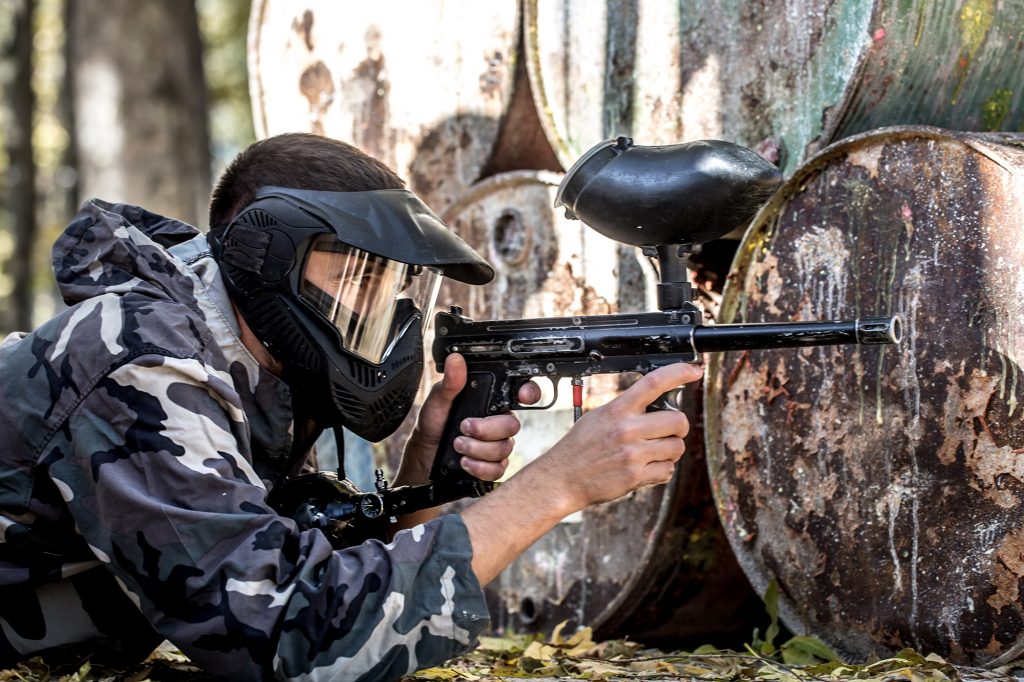
When testing the strength of a security system, professionals deploy what is known as a “red team”. Red team testing means trying to break into your own house, and getting others to try too. Obviously, unless you can afford it you are going to want to avoid brute force destruction in your simulations, but do your best to put yourself in the mindset of a criminal who wants what is inside. Train ahead of time using realistic MilSim airsoft guns or paintball guns so that you can anticipate and correct for problems before they happen, and develop muscle memory with familiar operations, to help you better perform in a life or death situation. Keep in mind that actual bullets will penetrate barriers that airsoft and paintball might not. Additional velocity is a consideration to remember since these training aids shoot their projectiles slow enough to watch to ball fly to it’s target, real bullets aren’t slow at all. Whichever you choose, be sure to pick a replica of your current home defense firearm in weight and function.
Don’t want to leave bug-out bags in plain sight? Consider a decoy floor vent and storing them just out of sight in a sealed ducting shaft, so that all you have to do is lift the panel and reach in to grab them. If you have decided to add surveillance electronics with remote monitoring, consider where you will store your DVR, router, back up power supply and other central equipment. You will most certainly want to have it behind a lock, but perhaps you may try to conceal it’s location too.
Invest in a quality safe that can be bolted to the house. The size will vary depending on what valuables you have to secure. Keep vital records like passports social security cards and birth certificates in there, as well any cash or extra checkbooks, jewelry, precious metals, extra firearms, etc. Make sure the safe is located in a common area, ideally within a wall and covered by decorative paneling with a recessed access switch. At minimum, framed artwork hung over it will suffice, provided you attach contact sensors to the painting that set off the alarm if the painting is removed to access the safe. You may want to keep loaded firearms strategically around your house so you can get to them quickly if something bad happens, in which case you don’t want to fumble with a safe dial. You may not want to keep them lying around for everyone to see either though.
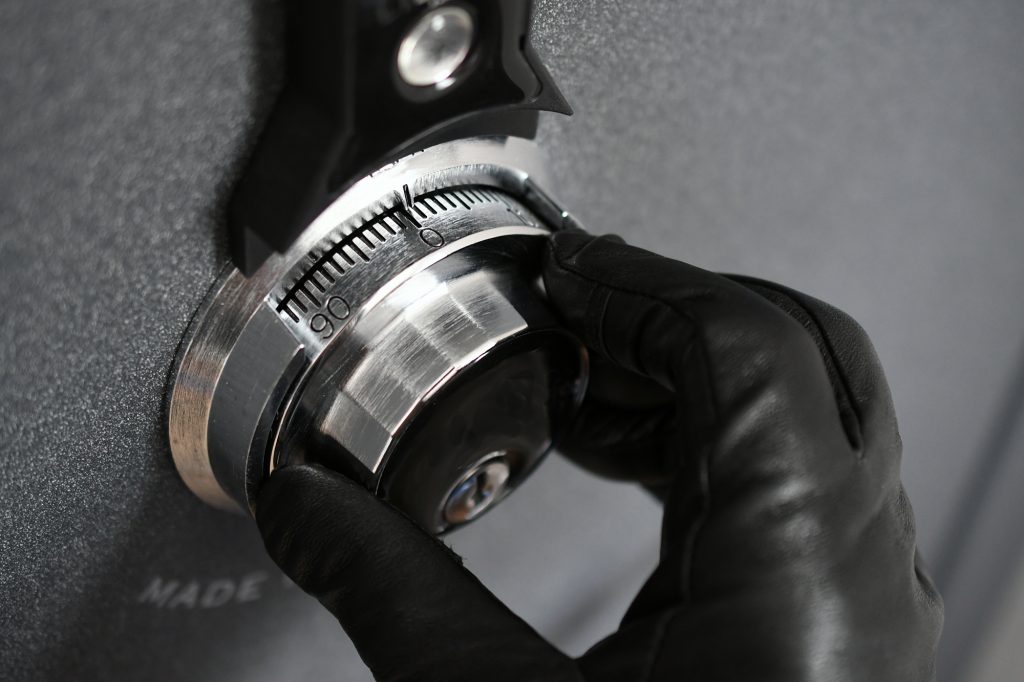
Some common places to conceal firearms, are in sconces, fake potted plants, false bottoms of drawers, etc. Some people will mount a magnet and stick a handgun to it in a recessed space. Cutting a space in a wall and building storage shelves and then covering it with a mirror mounted on hinges with a small concealed latch, perhaps magnetic, is a good option for storing several weapons and accessories in one place for immediate access. You can even buy items like working analog clocks with concealment for emergency handgun storage.
In addition to a safe and concealing firearms for quick access, if you are building new or remodeling, consider adding in hidden access and storage. Installing a drawer with no handles into a step, or having concealment behind a piece of trim, Hiding items in food containers, closets with hidden accesses, and even under home bunkers or panic rooms are all options depending on your budget.

Consider putting a few stuffed animals on your bed, and storing your most precious jewelry inside one of them. On a similar line of thought, if you have children consider that their rooms won’t be searched for valuables with the amount of attention other rooms may receive. If you are a book collector, consider cannibalizing some thrift store hardcovers and either hollowing out the middle of the pages for a small storage compartment, or cutting several books of similar height off at the spine, and gluing them to each other to provide hidden storage. Commercially, there are many items available ranging from dummy electrical outlets to household products like air freshener or decoy food containers with hidden compartments.
Another thing to consider is if a thief gains access while you are away and your house is “too clean” of valuables, they might spend more time looking harder. If you are well off financially and it shows, but the only jewelry you leave out are a couple of $80 watches, it’s a red flag to a thief. Leave them SOMETHING to take in every room in hopes it will keep them from looking too hard and finding your concealments. It is likely if they find one clever concealment, and feel they have the time, that they might just do a thorough check for others. Leave a cheap shotgun under your mattress, leave a cheap lockbox in the closet with $50 in it, and leave a small jewelry box out with some replaceable gold and silver. Hide the stuff you can’t replace.
When securing or concealing valuables, it is important to take a realistic valuation. Knowing the difference between actual and perceived value is important when determining how hidden some items may need to be. A irreplaceable heirloom may look like $100 to a thief, but something with a higher resell value may be more replaceable. In addition to taking photographs of your valuable items, there are some other steps you can take to help recover things and reduce the chance of them being taken. You can mark items using things like UV pens, engraving or etching, and using microdots.

Microdot nanotags are handy for items like vehicles, firearms, high end computers, etc., where there are many components that can be taken apart and sold separately on the black market. Essentially between the size of a grain of sand or a period or dot on a lower case ‘j’ or ‘i’, they are usually suspended in a UV reactive translucent paint. a single paint stroke on each component will deliver thousands of nanotags to the surfaces of your items. If stolen, then recovered, the tags contain a unique code only visible under a microscope that can be registered with national databases accessible to law enforcement. Make sure that even if you register, you also keep a hard copy of your code written down. Another clever way this tagging technology might be deployed is by uniquely marking the intruder themselves, so THEY can be identified later.
I hope this article has been a comprehensive primer into the options available for home security, as well as some of the extra considerations involved in securing a home for bugging in. I also hope it will inspire you to make a more proactive investment in your own security. Nobody but you is responsible for keeping your preparations and your family safe. Let us know in the comments if we have missed any critical information, or if you have other creative ideas for security options around the home or homestead.
